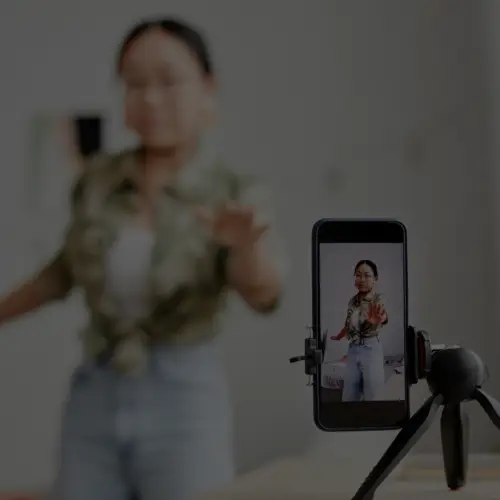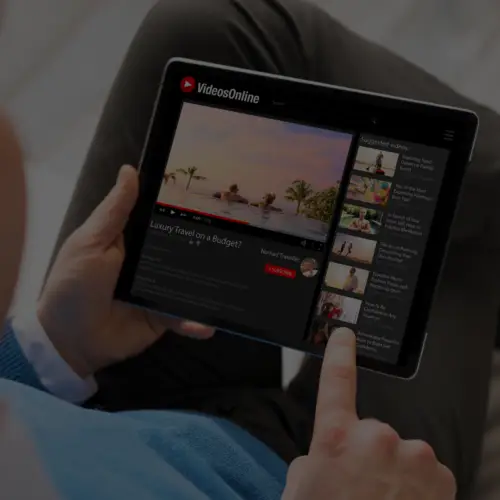27 Feb The Instagram API In Action: Examples and Tips

People pay attention to Instagram for many reasons. Some love photography, some love sharing their experiences, and businesses love the marketing opportunity. The app is popular both in its appeal and its usage. Upwards of 40 million photos per day show up on the app. People love to share, comment and like each others photos. Some of them are truly works of art. The ability to tag photos by theme or hashtag or even location adds a lot to the usability of the app, too. It’s definitely an app that shouldn’t be ignored.
With Instagram‘s ever-growing popularity and use, you might be wondering how you can work with this quirky photo app and its API for your brand. Many developers, individuals, and businesses are currently exploring how to take advantage of the possibilities of using Instagram’s API. A good way to figure out your own plan is to see how others have found success. Then you can work with a developer to help you implement your ideas – API implementation isn’t exactly a DIY project!
What People, Sites, and Companies Are Doing with the Instagram API
In the early days of working with Instagram, a lot of effort was put into providing users the ability to print or view their photos from services like Extragram, Printstagram, Postagram, and Instaprint. These helped to bridge the gap for users between Instagram’s online presence and the real world. However, there are other ways Instagram has been used to improve user experience, promote business, and much more.
Instaprint

Mentioned above, Instaprint is an example of one of the first experiments with the API. Instaprint tracks printed photos by hashtag and geotag, catalogues them, and prints them in realtime with the comments people have made. This sort of use can be taken further by businesses involved in travel and tourism. For example, imagine automatically having a photo album created at the end of your vacation based on the Instagram photos you took during your trip.
Venueseen

Venueseen took this a step further and really started to spark creativity for sites when using the Instagram API. Venueseen catalogs Instagram photos based on geotags or hashtags, combining them into an “event.” Venueseen is more than just another Extragram, though, as it is actually a business venture based on Instagram API, geared towards marketing for the businesses that use it.
Venueseen locates photos based on information and assembles them into a marketing campaign for small businesses or events. As an added bonus, the program will invite original photographers to a contest to reward their photographic work, encouraging more users to be engaged with their marketing project. One example is the #Indy500orBust campaign that is currently ongoing.
This use of the API can be taken further to run competitions, fundraisers, and data collection about anything you can take a picture of. Having a repository provided by Venueseen or you can help organize massive amounts of content from Instagram in one place.
The Beat

One of the most interesting and creative ways a webapp has implemented the Instagram API is The Beat by Rutgers’ Social Media Information Lab. The Beat pulls Instagram photos from all over the world into a searchable database. They also combine with Google Street View, so viewers can look around at the location where a photo was taken. The Beat demonstrates a strong example of what creativity and combining sources of data online can accomplish with the Instagram API. Figuring out what to do with and how to do display all of this information are the hard parts!
Non-Profits
Non-Profits use the Instagram API to promote fundraising and awareness campaigns. Robin Hood NYC used the API to make a custom user-created visualization for all of the fans and people engaged in the campaign. Charity:water is another company that uses Instagram to promote donations and photos related to their work on their website. These ideas could be taken further to create public awareness about an issue with the right use of the API and other similar crowdsourced actions.
This year at Coachella, the Instagram API was put to creative use by showing a live feed for everyone using the app at the concerts. It was a cool and engaging way to capture the experiences people were having at the event. This use of the API could easily be modified or improved to give it more practical application at weddings, large reunions, or any other event where images go a long way to impressing or having an impact on those in attendance.
Other Sites
Sites like Dropbox, Fancy, and Foodspotting have found ways to implement the Instagram API to help users of their site have a better experience. They use the API to link users’ feeds or accounts to the pictures they take, allowing for easy integration and sharing. Even a variety of bands like Moby and the Deftones, and companies like Starbucks, have been implementing the Instagram API into their sites. These ideas can easily be adopted by a variety of businesses and improved upon with the right ideas.
Untapped Features of Instagram’s API

There are plenty of opportunities for creativity using the Instagram API. Although hashtags and geotags have been leveraged as a useful resource (and could probably work for your business), there are as yet a few untapped features in the API worth considering in your attempt to implement the API.
More and more webapps and sites are using a custom URL-style scheme for iPhones, instagram://, which opens the application directly. A poster-embedded QR code could push users to “start now” by opening their Instagram app right to the camera.
These “iPhone Hooks” are an amazing, easily executable idea. Placing them in-store, on posters, and on your campaign’s website could be the extra push needed to kickstart a webapp into full-gear, spread awareness faster, or provide a strong boost to a marketing campaign.
Instagram’s API will Reward Creativity
The Instagram API has five basic, overarching rules in its TOS. Of course, things are a little more detailed in their full TOS, but these rules make it easy to know your boundaries when it comes to getting creative with the API.
Essentially, using the API means you acknowledge that you do not own the images pulled from Instagram, you cannot use the name Instagram in whatever you develop using the API, you must have users’ express consent to “crawl or store users’ images,” you can’t copy or replicate the “core user experience of instagram.com,” and lastly, you can’t “abuse the API” by developing something that makes too many requests too quickly.
In the end, the market for an Instagram-based campaign is a moderately narrow one, but one with a great deal of interest, and the potential to provide you with lots of visual material. Hopefully, some of the above examples helped get your creative juices flowing. Also worth nothing, this is still the first version of the API. You can bet that more people will be using Instagram in the future and that the API will only get bigger and better.






